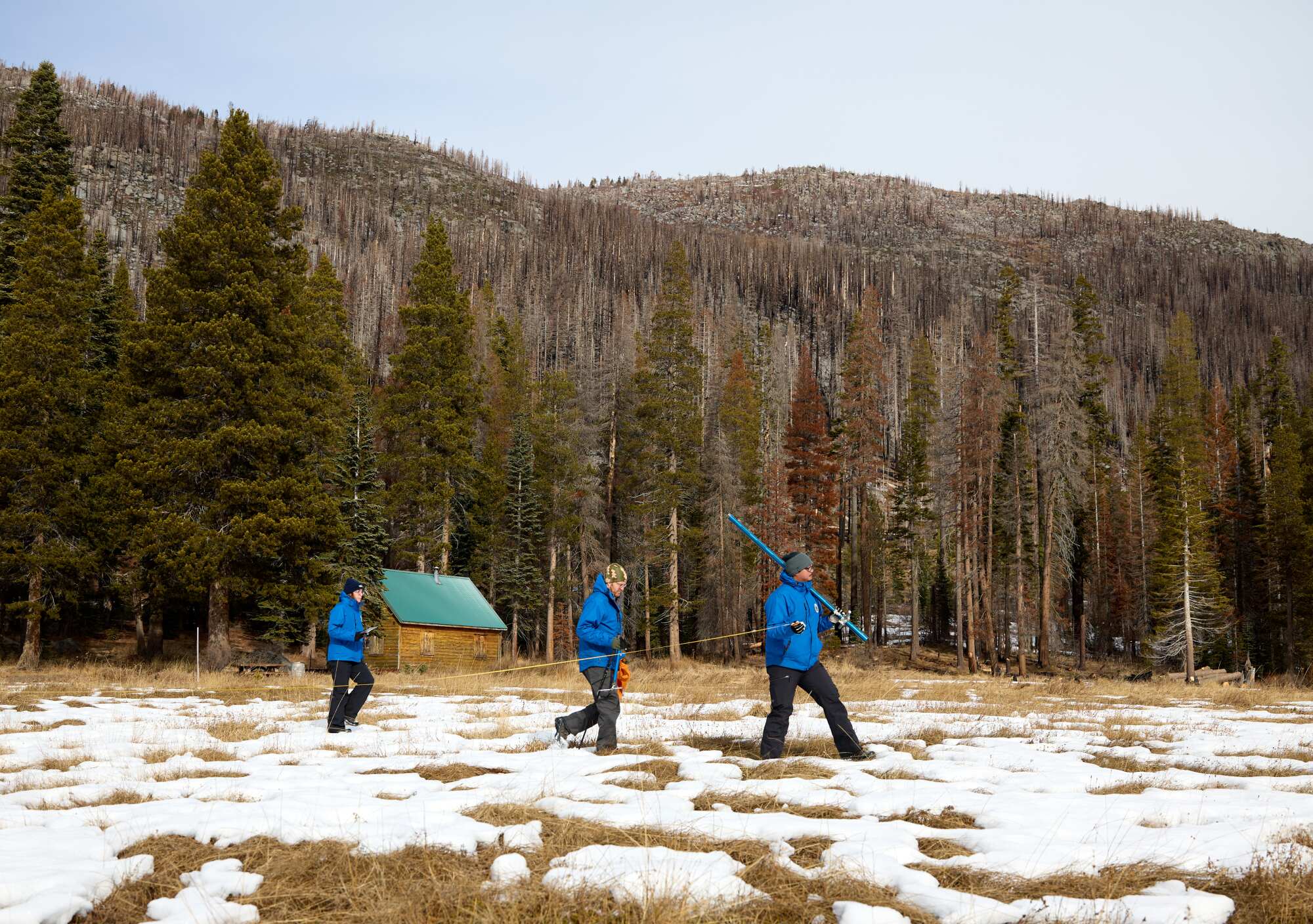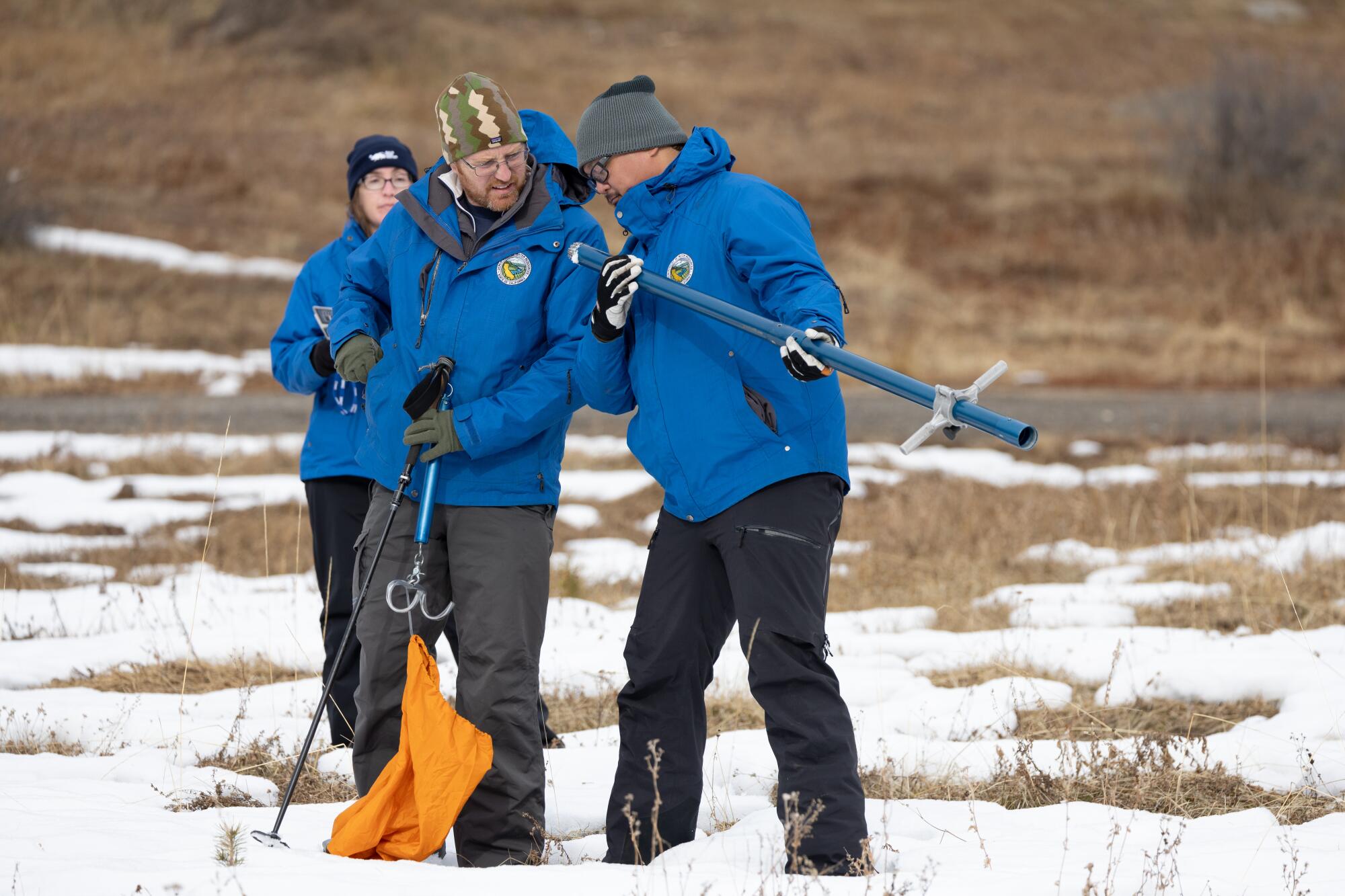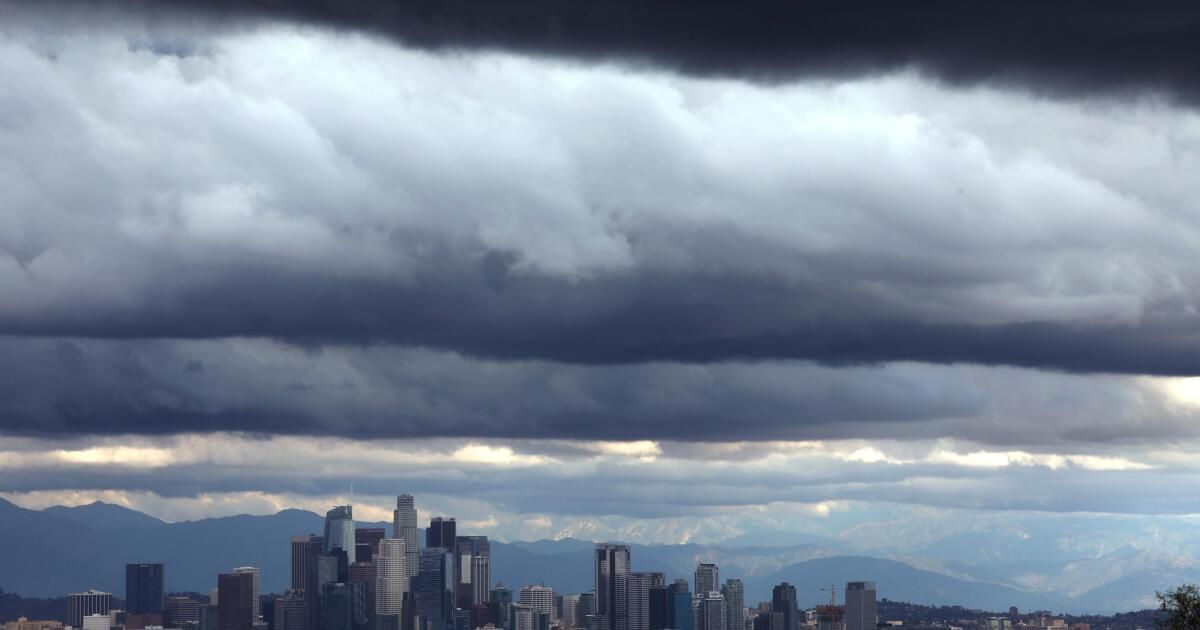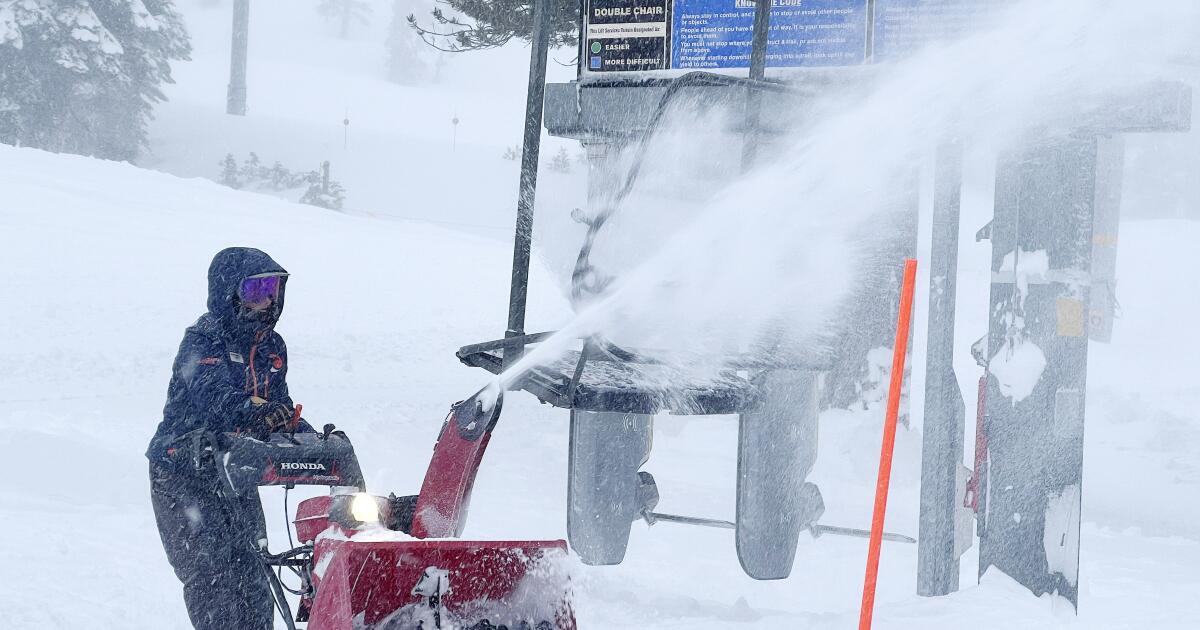Although recent storms have battered the California coast and raised reservoir levels, the downpours have so far failed to deposit significant snow cover in the Sierra Nevada, which experts say is plagued by a severe “snow drought.” ” at the beginning of the season.
Powerful December storms brought huge waves and record rainfall to California, but most of it fell in coastal areas and almost none in the interior part of the state where the Sierra is located, said Daniel Swain, a climate scientist at UCLA. .
“In some cases, there is literally no measurable snow on the ground,” Swain said during a briefing Tuesday. “What this means is that right now, as of today, the snowpack is at or below record low levels from early January, and I know that’s pretty alarming.”
Aggressive and impactful reporting on climate change, the environment, health and science.
While there is still time for snowpack conditions to improve, the possibility of a lean snow season is concerning. For decades, Californians have relied on the reliable appearance of spring and summer snowmelt to provide nearly a third of the state’s water supply. Low snow cover can also lead to drier and more fire-prone forests.
On Tuesday, state officials conducted their first snow survey of the season at Phillips Station near South Lake Tahoe, where the ground was a patchy mix of grass and dust. Monthly winter and spring surveys are key to forecasting how state resources will be allocated each year.
The snowpack at the site measured 7.5 inches, with a snow water content of 3 inches, said Sean de Guzman, manager of the snow studies and water supply forecasting unit for the California Department of Water Resources. . That’s just 30% of the average for the date and 12% of the average for April 1, when the snowpack is typically deepest.
“The January snow survey is always our first big reveal of snow conditions for the year,” de Guzmán said. “This time last year we were standing in almost 5 feet of snow, very different from where we are here today.”

Officials walk through snow-free areas while measuring snow cover during the first media snow survey of the 2024 season at Phillips Station in the Sierra Nevada. Statewide, snowpack is 25 percent of average, but significant snow is forecast for the next seven days in the Sierras.
(Fred Greaves/California Department of Water Resources)
Electronic readings from 130 stations in California indicate that statewide snow water content is just 2.5 inches, or 25% of the average for the date, compared to 185% at the same time in the year. last year.
“While we are glad that recent storms have increased the snowpack slightly, today’s dry fall and below-average conditions show how quickly water conditions can change,” de Guzman said.
Low precipitation and warm temperatures are causing snow drought conditions across the West, not just the Sierra Nevada, according to the National Integrated Drought Information System. Other regions include the Northern Rocky Mountains and parts of the lower Colorado River Basin and the Grand River Basin.
“Snow drought conditions will continue to evolve throughout the winter,” NIDIS said on its website. “Early in the season, recovery from the snow drought can occur quickly. “Recovery from snow drought in late winter and early spring, when snowpack is typically near peak, can be more difficult.”
Unlike a typical drought, which refers to a complete lack of moisture, a snow drought refers to a shortfall in the expected amount of snow, Swain said.
“In reality, you might see average to above-average precipitation and average to above-average soil moisture, but have abysmally low snowpack,” he said. “And that’s potentially what we’re headed toward this winter in some parts of California and the Southwest.”
Part of the challenge is that much of the state’s recent precipitation has fallen as rain rather than snow, a product of warmer conditions driven by El Niño and human-caused climate change. El Niño, a weather pattern in the tropical Pacific, arrived in June and is associated with higher temperatures around the world.
Although December data is still pending, federal climate officials have said it is “virtually certain” that 2023 will be the hottest year on record.
“We’ve seen a number of storms that probably would have been colder — and snowier — that have been rainy,” said Andrew Schwartz, director of UC Berkeley’s Central Sierra Snow Lab in Donner Pass, where snowfall currently measures 32% of average. .

Sean de Guzmán, right, Manager of the Snow Studies and Water Supply Forecasting Unit at the California Department of Water Resources, and Anthony Burdock, Water Resources Engineer in the Water Supply Forecasting and Snow Survey Unit Snow, they measure the snow cover during the first snow survey for the 2024 season media. at the Phillips station in the Sierra Nevada.
(Andrew Nixon/California Department of Water Resources)
Data going back to 1978 shows notable trends in that regard, Schwartz said, with snowfall decreasing and precipitation increasing in every month except February.
“This really shows us that our snow season is getting shorter,” he said. “We will need to plan for shorter periods of snow accumulation and the complications this can bring with our water resource management.”
In fact, parts of the state’s water infrastructure were designed for the slow trickle of snowmelt, not the rapid deluge of rain, according to state climatologist Mike Anderson. A more mixed regime will require new strategies and technology, such as forecast-based reservoir operations and aerial mapping tools to better prepare for runoff, manage water releases from dams and “help the state adapt as we move toward a warmer world,” he said. .
However, there is good news. The recent storms helped replenish major reservoirs, which are at 116% of average levels to date, according to state data. California’s two largest reservoirs, Lake Shasta and Lake Oroville, are at 69% and 68% capacity, respectively.
What’s more, an incoming storm sequence is expected to bring much colder conditions to California over the next 10 days, including several storms capable of dropping 6 to 12 inches of snow in the mountains, Swain said. That could lift the state out of record-high territory by mid-January, although snowpack will likely still remain well below average.
“I don’t necessarily think this is going to be a good snow year; In fact, it could end up being a pretty bad snow year, even if Central and Southern California end up seeing above-average precipitation overall this winter, which is still a distinct possibility, because it’s likely that hot most of the time,” he said.
But there is still a long way to go. California’s water year runs from October 1 to September 30, and the majority of the state’s precipitation typically falls in January, February and March.
“We’re only a third of the way through the ‘big three’ months, and a lot can change,” said Anderson, the state climatologist.
Anderson noted that El Niño is just one of several factors that can influence conditions in California, including subseasonal weather patterns that can influence the types and temperatures of storms that hit the state.
DWR’s De Guzman said the snow study results “show that it’s still too early to determine what kind of year we’ll have in terms of rain or dryness, and a lot can happen with our storm systems between now and April, when we should see our peak snow.”
He noted that state officials are simultaneously preparing for extreme wet or extreme drought conditions, including shoring up infrastructure against flooding and coordinating with emergency response partners in hopes of avoiding a repeat of last year, in which saw devastating flooding, levee breaches, road damage and deaths. powered by more than 30 atmospheric rivers.
“California saw firsthand last year how historic drought conditions can quickly give way to dangerous and unprecedented flooding,” read a statement from DWR Director Karla Nemeth. “While El Niño does not guarantee an above-average water year, California is preparing for the possibility of more extreme storms while increasing our climate resilience for the next drought.”
The National Oceanic and Atmospheric Administration’s seasonal outlook still favors warmer-than-normal temperatures and above-normal precipitation in California at least through March, de Guzmán said, noting that “we still have a lot of season left.”
The next snow survey will take place on February 1.












